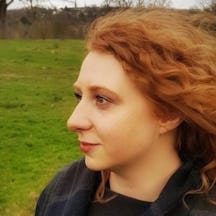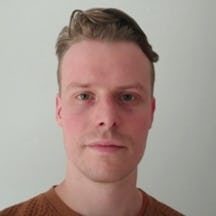Determined to try LSD, Constance Newland used her self-professed “frigidity” to take part in an acid-fuelled psychological experiment in the late 1950s. We uncover Newland’s experiences – documented in a book published in 1962 – and explore what Newland has in common with contemporary sexual psychonauts.
In 1959, a woman named Thelma Moss journeyed through New York City to the clinic of psychotherapist ‘Dr M’ to take part in an experiment. Over 23 sessions, Moss took small doses of LSD to speed up the loosening of her mind. The aim was to resolve symptoms of neurosis, one of which was her self-professed “frigidity”.
Once the experiment was complete, Dr M suggested that Moss publish an account of her experience. The resulting book, ‘My Self and I’, appeared under the pseudonym ‘Constance Newland’. It records the gradual resolution of her sexual repression, which was heralded as proof that LSD therapy could induce miraculous results.
It might be tempting to view Constance Newland as a hapless sexological guinea pig, susceptible to the diagnostic construction and scientific exploitation that happened to be fashionable in the late 1950s. But there’s more to it than that.
Newland’s book isn’t just a trip report, a testimony of the success of psychedelic therapy, or simply a tale of feminine sexual self-actualisation. She was a good deal more knowing and cunning than appearances might imply, and her account toys with the boundaries between psychiatric prescription and recreational drug use.
Opening the “closed-up clam”
Newland was first introduced to LSD through the writings of Aldous Huxley, who describes hallucination as a form of transportation to “new creations” of vision and feeling. She writes, “so enthralling were Mr Huxley’s descriptions… that I determined to have the experience myself.”
Newland never appears to have sought out LSD recreationally, and explains it was “by chance” that she stumbled across an advertisement offering participants the opportunity to take part in an experiment “concerned with the effectiveness of LSD in relation to specific neuroses”.
Having secured an interview with Dr M, Newland realised that her determination to try LSD had to be accompanied by a neurotic symptom, and struggled to conjure one up. “Since I had been psychoanalysed and was functioning well,” she writes, “I was at a loss for a specific problem – until I realised that I had never overcome my frigidity.”
Newland’s “perhaps too intimate” account of LSD therapy, while cloaked in scientific legitimacy, feels more like an experiment in sexual self-fashioning than an account of being ‘cured’. It is impossible to know whether she knew about the history of frigidity, and how the diagnosis was used to construct norms of female sexual appetite. ‘My Self and I’ is, nonetheless, an example of a woman subverting the medicalisation of female sexual function in mid-century America for her own purposes: in Newland’s case, a desire to experiment with LSD to ‘hack’ her sexuality.
MORE: Explore the uses and abuses of six addictive substances through these intoxicating histories
Newland’s book is a record of one psychonaut’s journey to what some, in a decade that put man on the moon, called “inner space” and what Newland regarded as the “buried regions of the mind”.
She wrote, “After pulling all the scattered parts of me together, I found that I felt released, relieved – wonderful. There had been no resistance I had not been able to overcome. And, for the first time, under LSD I had found pleasure in sex, rather than terror and pain.”
Through LSD therapy, Newland found the causes of her sexual repression but also, out of the fragments of its neurochemical explosion, a sense of oneness – and sexual self-discovery – that was both overwhelmingly powerful and entirely new.
The 20-year year acid trip
By 1962, when ‘My Self and I’ was published, Anglo-European culture was reaching the final stages of a 20-year acid trip that connected the pharmaceutical industry to the psy-sciences, and the Cold War’s military-industrial complex to the emerging 1960s counterculture.
On 16 April 1943, the inventor of LSD, Albert Hoffman, had accidentally ingested his first dose while working in his lab at the Swiss firm Sandoz. The drug, derived from the ergot fungus, had seeped in through his fingertips. As he recalled in his book, ‘LSD: My Problem Child’, it provoked a “stream of fantastic pictures” that he described as something like a “dream”.
As Erika Dyck argues in ‘Psychedelic Psychiatry’, the visionary potential of LSD was soon recognised by a band of doctors looking for new ways to heal, rather than disturb, the mind. Constance Newland fully recognised that LSD held special promise for the cure of what were widely considered in the 1950s and 1960s to be alarming sexual problems – from a lack of sexual interest, to an interest in people of the so-called ‘wrong’ sex.
The moment was short-lived. As the 1960s progressed, and as politicians and mainstream opinion became more and more anxious about the hippie counterculture’s twin embrace of acid and free love, the prospects for further scientific investigation diminished. In Britain, a 1966 amendment to the Drugs (Prevention of Misuse) Act effectively outlawed LSD and cast a chill over therapeutic research for decades.
The resurgence of ‘groovy science’
Before United Nations drug control conventions virtually shut down psychedelic research, it had demonstrated potential positive effects, such as enabling people to have sexual fantasies, and fostering empathy between sexual partners. It also emphasised the possibilities of LSD enhancing sensations, and the pleasure associated with both touching and being touched.
Drug users continued to self-experiment with acid as an instrument of personal transformation and change – including in their sex lives. Such experiments featured in popular culture from the time, for example in the entanglement of hallucinogenic drug culture and sex seen in Nicolas Roeg’s provocative 1970 film ‘Performance’, and continue to be discussed in more recent testimonies detailing sex on LSD.
Writing in 2002, Annie Sprinkle – pornographer, sex educator and writer – recalled experiencing alternate realities, new dimensions and other ways of seeing and feeling which meaningfully informed her transformation into “a sexual adult”. In his book ‘LSD: Revelation of the Mind’, Peter Hannes suggests that with LSD, “sexual love may be transformed into a type of worship in which the partners are, for each other, incarnations of the divine.”
Though many obstacles remain, there has been a burgeoning renaissance of research into the use of psychedelic drugs for the treatment of a host of conditions including depression, addiction and post-traumatic stress disorder. Through a series of experiments using brain scans and resulting visualisations, scientists have recently gained a glimpse into the ways LSD can stimulate ‘ego dissolution’, destroying the normally concrete sense of where one person ends and another begins.
The ‘groovy science’ of the 1960s provides important insight into the ways the LSD compound can work on the mind and body to facilitate sexual experimentation. Though Newland’s ‘My Self and I’ may at first glance primarily be evocative of a certain moment in history, hidden but committed psychonauts continue to produce narrative accounts of sex and psychedelics, demonstrating their potential not only for the primal means of enhancing pleasure but also as a transformative process for fostering connection.
About the authors
Alex Dymock
Alex is a lecturer in Criminology and Law at Royal Holloway, University of London, and is currently working on the Wellcome-funded Pharmacosexuality project (@pharmacosex), which explores the historical and contemporary interaction between sex and drugs. She is also completing her first book, ‘Crime and Perversion: Abject Intimacies and the Erotics of Law’, to be published by Routledge.
Ben Mechen
Ben is a historian of modern Britain and a researcher on the Pharmacosexuality project. He is currently working on his first book, ‘Responsible Pleasures: Liberalism and the Sexual Revolution, 1967-85’.
Leah Moyle
Leah is a lecturer in Criminology and Sociology at Royal Holloway, University of London. Leah’s research interest focuses primarily on understanding illicit drug markets and ‘non-commercial’ drug supply. She is also currently working on the Wellcome-funded Pharmacosexuality project.





